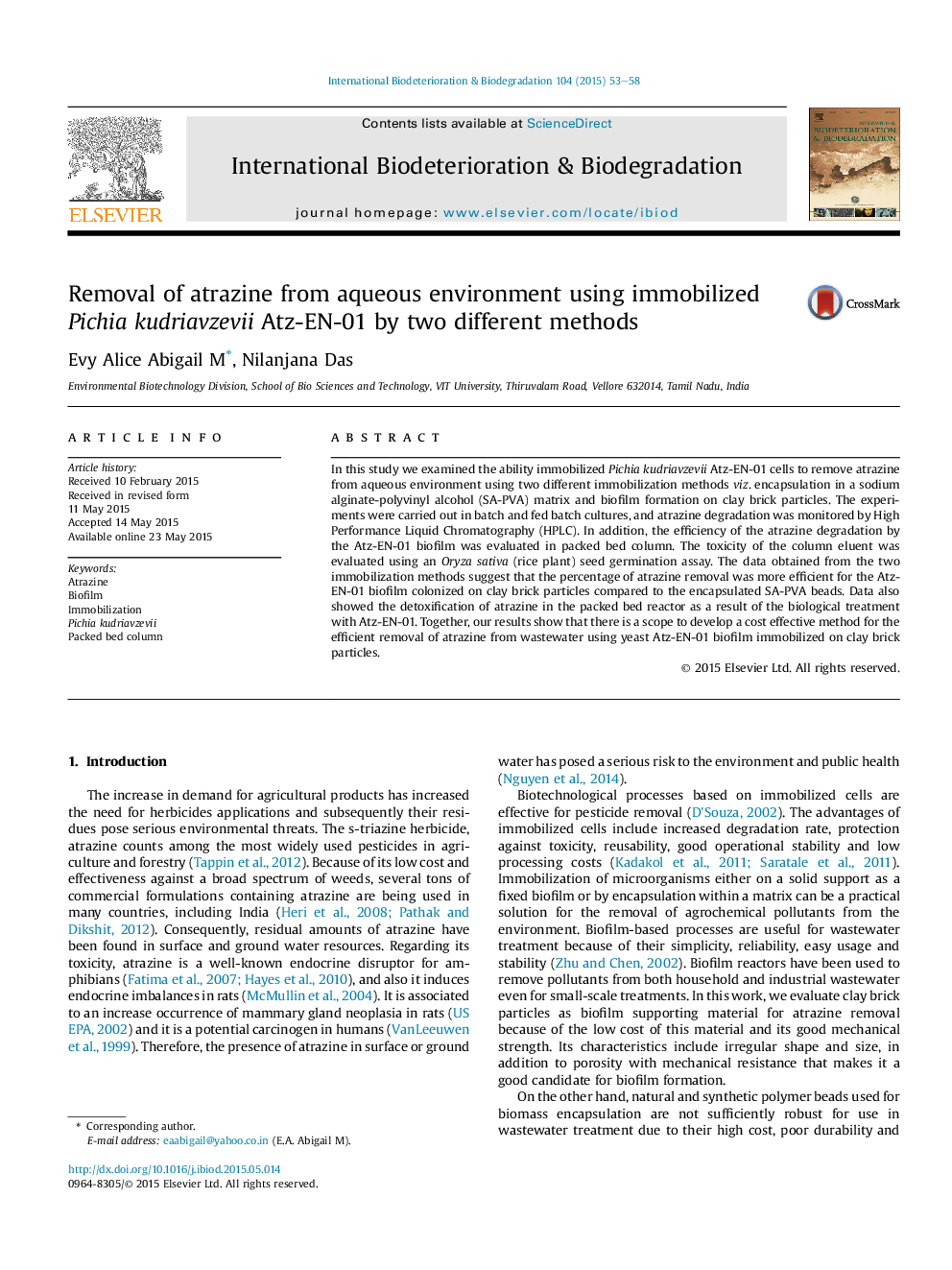| کد مقاله | کد نشریه | سال انتشار | مقاله انگلیسی | نسخه تمام متن |
|---|---|---|---|---|
| 4364459 | 1616313 | 2015 | 6 صفحه PDF | دانلود رایگان |

• First detailed study on atrazine degradation by immobilized yeast Pichia kudriavzevii Atz-EN-01.
• Atz-EN-01 biofilm attached onto clay bricks showed a higher degradation rate than SA-PVA immobilized beads.
• Continuous treatment process demonstrated the chance for practical applicability of yeast biofilm in atrazine treatment.
• Seed germination assay exhibited reduced toxicity indicating the potential of Atz-EN-01 in atrazine remediation.
In this study we examined the ability immobilized Pichia kudriavzevii Atz-EN-01 cells to remove atrazine from aqueous environment using two different immobilization methods viz. encapsulation in a sodium alginate-polyvinyl alcohol (SA-PVA) matrix and biofilm formation on clay brick particles. The experiments were carried out in batch and fed batch cultures, and atrazine degradation was monitored by High Performance Liquid Chromatography (HPLC). In addition, the efficiency of the atrazine degradation by the Atz-EN-01 biofilm was evaluated in packed bed column. The toxicity of the column eluent was evaluated using an Oryza sativa (rice plant) seed germination assay. The data obtained from the two immobilization methods suggest that the percentage of atrazine removal was more efficient for the Atz-EN-01 biofilm colonized on clay brick particles compared to the encapsulated SA-PVA beads. Data also showed the detoxification of atrazine in the packed bed reactor as a result of the biological treatment with Atz-EN-01. Together, our results show that there is a scope to develop a cost effective method for the efficient removal of atrazine from wastewater using yeast Atz-EN-01 biofilm immobilized on clay brick particles.
Journal: International Biodeterioration & Biodegradation - Volume 104, October 2015, Pages 53–58